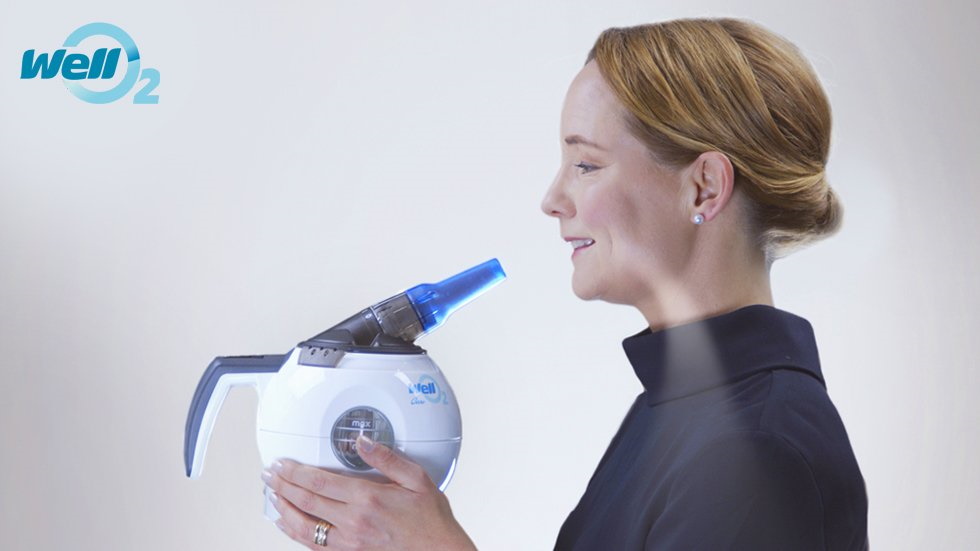Spring causes rise in asthma: breathing exercises to reduce the impact and gain control of asthma
- Written by Tess Sanders Lazarus

With Spring well and truly underway, many people across the country are already starting to feel the effects of the new season as pollen and other tiny particles move through the air and trigger asthma and allergies.
According to Jonas Pilhage, Spring is a challenging time for many. The New Zealand Health Quality and Safety Commission states that the country has a high prevalence of asthma with one in seven children (13 percent) and one in eight adults having asthma (12 percent).
Australian Bureau of Statistic states that some 2.7 million people in Australia have asthma – that’s around 11 percent of the population.
Jonas Pilhage is the regional director for WellO2 in Australia and New Zealand. WellO2 is an innovative breathing exercise device invented in Finland that strengthens and cleanses the lungs through counter pressure breathing and steam inhalation. The innovative double body structure of the device ensures even steam formation when in use and protects from exposure to hot water.
“As we move through Spring, asthma can become more problematic. To help reduce the impact of asthma symptoms we encourage people to engage in the simple act of breathing,” Pilhage said.
“A large body of research exists that shows people with asthma are able to reduce symptoms and improve lung function with breathing exercises and there are multiple practices that you can implement into your daily routine that may help to reduce your asthma symptoms and improve your general wellbeing.”
This is one of the reasons why Pilhage encourages people to undertake breathing exercises using steam and he has put together some tips on how breathing can help people living with asthma to gain better control and reduce the symptoms of asthma.
Positive mindset
“One of the most important aspects of living with asthma is to maintain a positive mindset. We all live with different challenges in life and asthma can be managed with the right plan, tools, approach and a positive mindset,” Pilhage said.
Yoga breathing
“We all know the physical effects and benefits of yoga, but you may not have considered how yogic breathing can play a part in your asthma management,” Pilhage added.
“The practice helps to regulate your breathing and is ideal for calming the nervous system. There are various different techniques that may help to stabilise your breathing, including alternative nostril breathing, cooling breathing and Dirga Pranayama, or three-part breathing.”
Nasal breathing
“We all breathe, but practicing to breath involves learning to control and really feel our breathing,” Pilhage emphasised.
“Breathing through your nose, rather than your mouth, can help to warm the air reducing the chances of respiratory problems. It can also help to balance out carbon dioxide in the lungs and help to reduce exposure to foreign substances.”
The Buteyko breathing method
“The Buteyko breathing method is used as a way to normalise your breathing patterns, aiming to provide relief from symptoms that contribute to conditions such as asthma and some sleep disorders. It aims to reduce hyperventilation and promote a calmer and more effective way to breathe,” Pilhage explained.
“The method involves various techniques around implementing breathing exercises through the noise that help to control the speed of your breath and how deep you are breathing in – including nasal breathing with the tongue resting on the roof of the mouth to help ensure that the airway is larger.”
WellO2 breathing exercise device
“Utilising a device such as the WellO2 assists you to undertake breathing exercises every day using the power of warm steam,” Pilhage emphasised.
“Daily use helps to increase breathing efficiency, moisturise airways and reduce irritation and strengthen the respiratory muscles. It can also have the added advantage of helping to improve your sleep and everyday performance.
“It works by opening and purifying the airways with warm steam and counter pressure breathing. Warm steam can reduce mucous and help it drain from the nose as well as moistening the mucous membranes of the airways and reducing the swelling of airways.”
According to Pilhage, warm steam therapy is not only good for people with asthma, it also assists people who rely on their voice for work such as singers, radio and television announcers.
“Athletes also benefit from warm steam therapy as well as it helps to strengthen and support the lungs,” Pilhage added.





